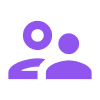An effective job profile is the foundation of a well-functioning employee. But what exactly does it entail? In this blog, we dive deep into the concept of job profiles. A job profile is a structured description of the responsibilities, skills and qualifications required for a specific job. From recruitment and selection to performance reviews and development plans, discover how job profiles help organizations communicate clear expectations and find the right person for the right job. We also explore the difference between job profiles and role profiles, while sharing key best practices for creating successful job profiles. Ready to take your organization to the next level? Read on!
What is a job profile?
A job profile is a structured and detailed description of the duties, responsibilities, required skills, and qualifications needed for a specific position within an organization. It includes information about the purpose of the position, reporting lines, and position within the broader corporate framework. A good job profile serves as the basis for recruitment, selection, evaluation and development of employees. It helps organizations communicate clear expectations to employees, promotes transparency and efficiency in personnel processes, and supports finding the right person for the right job.
What is the difference between a job profile and a role profile?
We see that more and more organizations have moved away from working with job profiles and have switched to role profiles. But what exactly is the difference? A job profile focuses specifically on the duties, responsibilities and required skills for an individual position within an organization. It describes the tasks a person must perform in that position and the competencies required to do so.
A role profile, on the other hand, encompasses a broader perspective and deals with the expectations and responsibilities of a particular role in the organization, regardless of who currently holds that position. It can cover multiple positions that have similar responsibilities and objectives, making it more general and flexible than a specific job profile.
Why do organizations work with job profiles?
Above we already gave a brief explanation of why it is interesting for companies to work with job profiles. A job profile can really help make various processes more efficient. We have listed the main benefits for you:
- Clarity and consistency: Job profiles provide clear and structured descriptions of duties, responsibilities and requirements, so employees and managers know what is expected of them. This promotes consistency and uniformity in performance.
- Recruitment and selection: Job profiles help attract suitable candidates by showing what the job entails and what skills are required. This streamlines the hiring process and increases the chances of finding the right person for the job.
- Evaluation and compensation: Job profiles provide the basis for performance evaluations and salary policies. They establish objective metrics to measure how well an employee performs compared to job requirements.
- Development and training: Job profiles identify needed skills and competencies, allowing organizations to create targeted training and development plans to help employees improve their skills.
- Organizational efficiency: The use of job profiles helps assign tasks and responsibilities in a way that matches employees’ competencies, improving overall efficiency and productivity.
Best practices for creating a job profile
Are you now also planning to start working on job profiles within your organization? Remember to consider these best practices:
- Involve relevant stakeholders: Make sure you involve not only HR and management in creating job profiles, but also the employees who currently perform the relevant functions. Their insights are valuable in getting a realistic and accurate picture of the job. Also discuss with team members and executives to understand which tasks and responsibilities are important to the success of the department and the organization.
- Keep job profiles current: Jobs and responsibilities may change over time due to company growth, technological advances or industry changes. Be sure to review and update job profiles regularly to keep them relevant and accurate. This also helps in attracting and retaining qualified employees.
- Make job profiles concise and clear: Keep job profile descriptions concise and use clear language. Avoid vague terms and make sure key tasks, responsibilities and requirements are well communicated. Also, use standardized formats to ensure consistency when creating job profiles across the organization.
Build job profiles in Learned with the power of AI
The Learned platform lets you build a job profile in no time by working with our AI-driven career framework. We provide advice for your job profiles based on your company’s sector on an appropriate job description and the most common skills and competencies. That way you don’t have to reinvent the wheel yourself and save a lot of time.



























